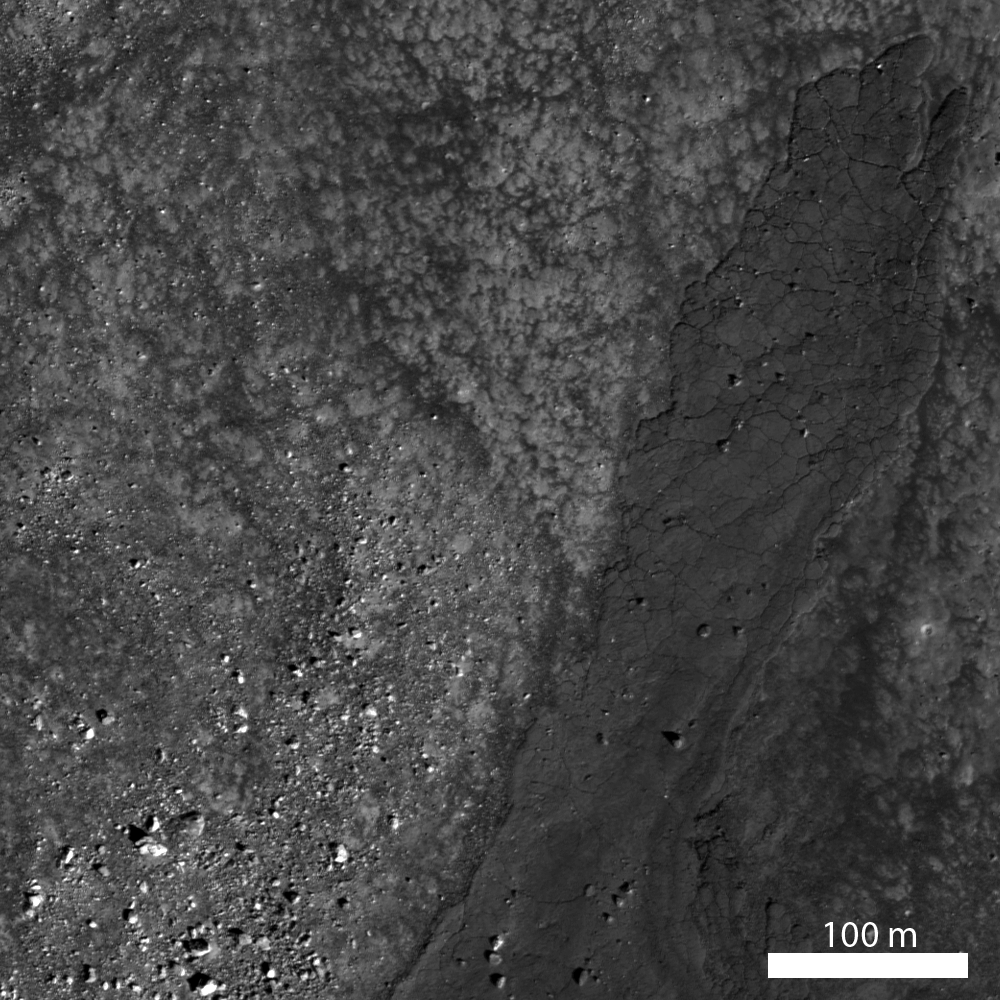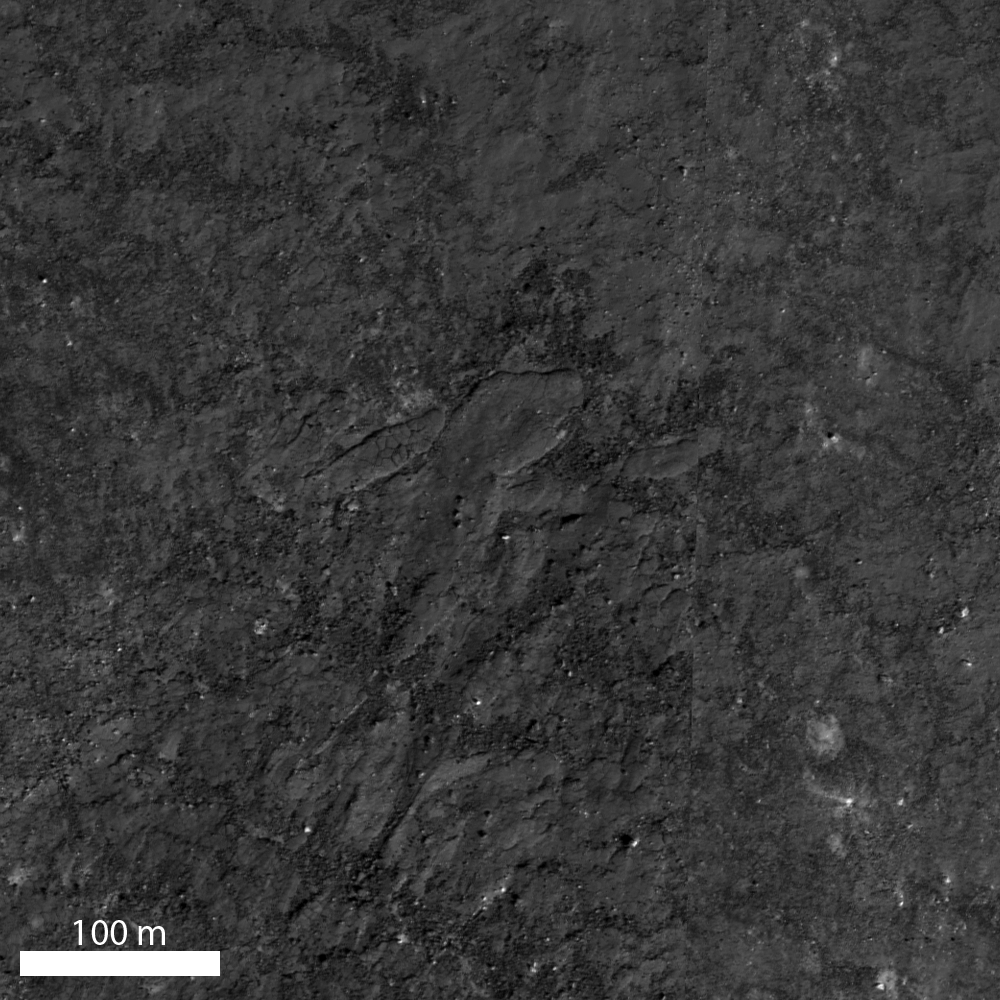
The discovery of impact melt deposits on the Moon is nothing new - large impact melt deposits were observed in Apollo era images. However, the high-resolution LROC NAC images provide views of impact melt flows that are much more widespread, beautiful, and complex than lunar geologists imagined! Melt deposits are not limited to crater interiors, impact melt is also observed on crater walls and outside of the crater - we've frequently focused on such occurrences in past Featured Images. Today's Featured Image shows the distal portion (a few hundred meters) of a several kilometer-long impact melt deposit that flowed away from the crater rim across the continuous ejecta blanket. There are even some ~5 to 10 m diameter boulders entrained within the impact melt flow.
The unnamed Copernican-aged crater, ~3 km in diameter, has an impressive and complex set of impact melt deposits. There are regions where the impact melt has eroded along parts of the flow, usually along what appear to be melt flow fronts. In some places, the erosion gives an illusion of waves across the landscape, which may reflect the process of impact melt deposition in stages. There are also places within the flow where breakout lobes flowed over the surface of the larger impact melt deposit.
The presence of a superposed lobe might suggest that there were multiple, distinct phases of deposition. However, the formation of an impact crater ~3 km in diameter is a near-instantaneous event, taking no more than a minute or two to form and emplace both the ejecta blanket and splash out impact melt from the crater interior. It is likely that the impact melt was deposited in a very short amount of time, probably in a quick succession of multiple stages. The lobe pictured above suggests that impact melt was deposited at slightly different times and/or upstream damming occurred that was then followed by a breakout (similar mechanism to basalt flows in Hawaii). Or, an alternate idea is that it may have formed through coalescence of melt while the melt was still fluid and flowed, following local slope changes, until the melt cooled. For the moment, we just don't know. Additional analysis, such as creating a DTM, would be useful because we could make slope measurements and make estimates on the amount of potential energy needed for a liquid impact melt to flow as we observe here.
Splash your way around the impact melt deposit in the full LROC NAC image!
Some related posts (but go ahead and use the search function to find more!): Polygonal fractures on Tycho ejecta deposits
Look at that flow!
A molten flood
Out of the Shadows: Impact Melt Flow at Byrgius A Crater
Published by Lillian Ostrach on 14 July 2011

